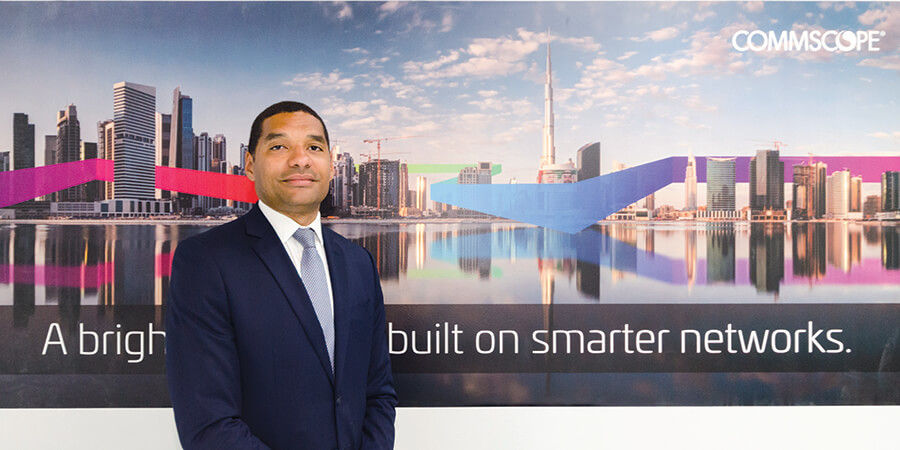CommScope is a global leader in providing wireless solutions and innovations to the telecommunications industry. During GITEX Technology Week, Telecom Review managed to secure an exclusive interview with Femi Oshiga, vice president of service providers in the Middle East & Africa.
What cutting-edge innovations and solutions did CommScope showcase at GITEX?
CommScope is focusing on helping customers meet the continuous growth of bandwidth. The adoption of disruptive technologies like AI, blockchain and cloud will only grow in prevalence and is yet another reminder that network operators will be faced with an unlimited appetite for capacity and data. In support of the Middle East’s network operators, CommScope is developing innovative fiber optic solutions to transport large amounts of data very quickly and reliably.
With the mass proliferation of IoT sensors/devices and other advanced technologies, building owners are laying the groundwork for further developments in data analytics and connectivity infrastructure needed to make building smart. In-building delivery of 5G service will be a major opportunity for operators to own the user experience, differentiate from over-the-top service providers and monetize service offerings.
CommScope exhibited its enhanced OneCell small cell solution which is uniquely positioned to make indoor 5G an enabler of enterprise business opportunities. CommScope also presented the all-digital CommScope ERA which upends the economics of indoor-building wireless with major space and fiber cable savings. The technology is a key enabler for network densification in LTE Advanced, Gigabit LTE and 5G. Existing ION-E systems can be software-upgraded to be interoperable with ERA.
With CommScope’s High Speed Migration solutions, the company is able to help datacenter managers accelerate the growth of their data centre capacity and the speed of their digital transformation initiatives. The industry is quickly moving from 10Gb/s and 40Gb/s to 100Gb/s, 400Gb/s and beyond. The more data consumers and network users need, the more services they expect, the more critical speed becomes. This is a global phenomenon and one of the top challenges that datacenter managers will face.
Customers continue to ask about powering connectivity which can sometimes be overlooked as more devices are connected to the network. It doesn’t make sense to place sockets, plugs and cables’ everywhere - they’ve got to be powered over Ethernet.
Next to data transport, Power over Ethernet (PoE) is the most important enabler of devices that use structured cabling in enterprise buildings today. In its new research and development (R&D) lab in Greensboro, North Carolina, CommScope will trial next-generation PoE applications to verify the performance and safety of the structured cabling systems that support them, especially regarding thermal performance in different real-world installation conditions.
CommScope has enhanced its One-Cell C-RAN to define new levels of in-building wireless. How important is in-building wireless for operators seeking to create new value-added services for enterprises?
The road to 5G is paved with fiber. In-building delivery of 5G service will be a major opportunity for operators to own the user experience, differentiate from over-the-top service providers and monetize service offerings. Data essentially is created from the inside the building, meaning every building is a hotspot and will require its own mini-network.
So what are these solutions that you need to cater for that use case and challenge? That is where One-Cell comes in. It is a self-optimizing and low-touch smart solution that you can plug-in to buildings that provides a high-capacity solution dedicated for each building at a time. The operators are going to need solutions like this to cover thousands of buildings every year as oppose to a couple of hundred.
The exponential increase in the use of consumer technology is fueling the need for bandwidth. However, what other trends are shaping the region’s need for more fiber?
GITEX is buzzing about new smart city technologies and our customers across the Middle East and Africa are seeing an appetite for unlimited network capacity not only for video consumption but across industries like construction and high tech. All of this connectivity will certainly depend on network densification, which is increasing available network capacity through adding more cell sites including radio access networks, macro sites, in-building wireless and small cell deployments.
At some point, all of the traffic has to land on a fiber network. That smart city trend coupled with cameras and sensors has to come into a central office, be processed and sent to the right location. That ‘come to’ is the big word because that is a fiber network and that’s a key strength for CommScope.









